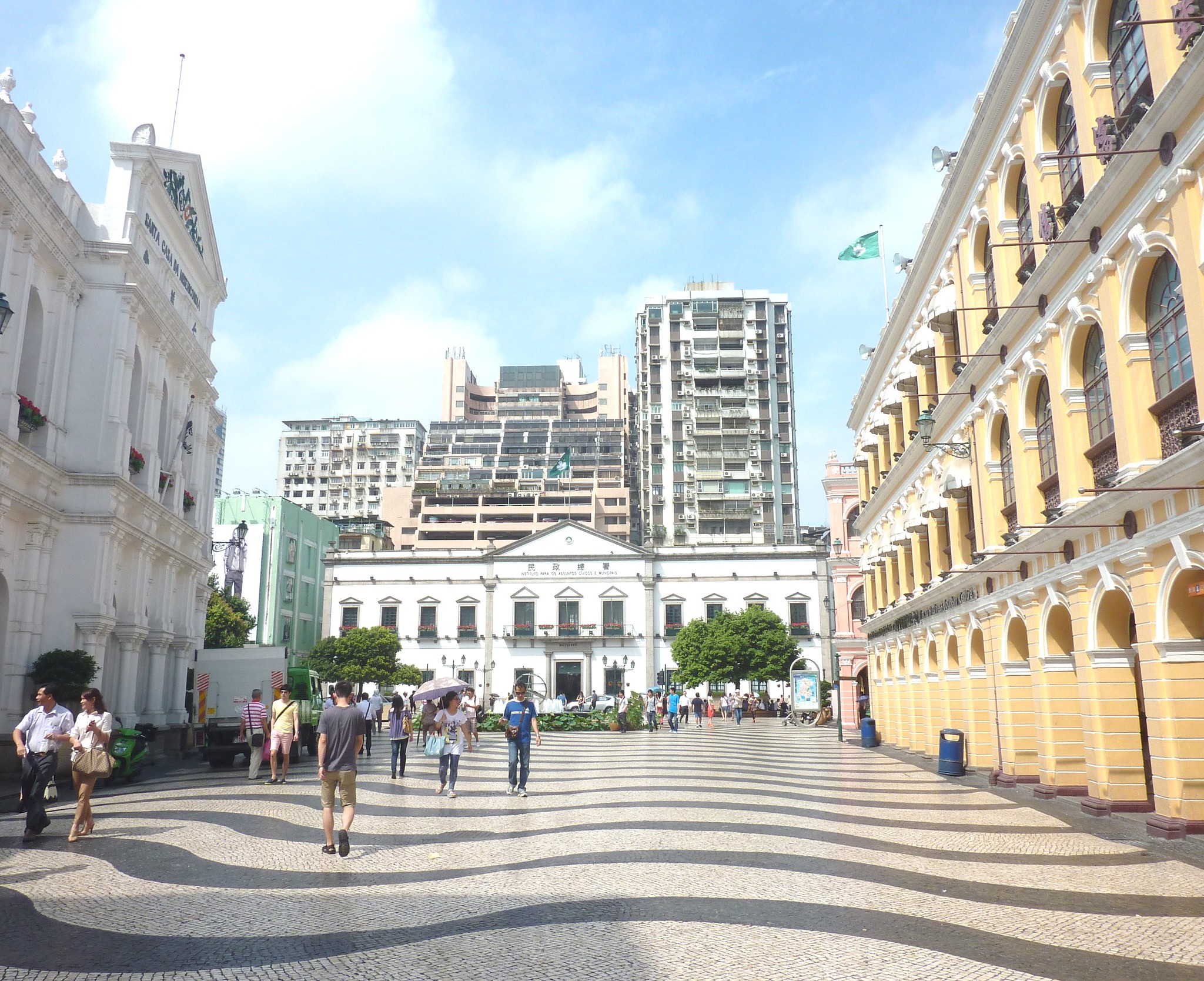Senado Square, the beating heart of Macau’s historic center, is a testament to the city’s rich cultural heritage and colonial past. This vibrant public space, paved with distinctive wave-patterned Portuguese cobblestones, serves as a gateway to the many architectural wonders that surround it. As visitors step into the square, they are immediately transported to a world where East meets West, and centuries of history unfold before their eyes.
The square is flanked by an impressive array of colorful neoclassical buildings, each telling its own story of Macau’s diverse architectural influences. One of the most striking structures is the Leal Senado Building, which gives the square its name. This elegant white edifice, with its ornate balconies and green shutters, was once the seat of Portugal’s colonial government in Macau. Today, it houses a public library and is a popular spot for tourists to admire its beautifully preserved interiors.
Adjacent to the Leal Senado Building stands the equally impressive General Post Office, a yellow-hued structure that perfectly exemplifies the Portuguese colonial style. Its arched windows and decorative moldings harken back to a time when communication between Macau and the rest of the world relied on the postal service housed within its walls.
As visitors continue their exploration, they’ll encounter the Holy House of Mercy, a striking white building with a façade that seems to glow in the sunlight. This charitable institution, founded in the 16th century, showcases a blend of Baroque and Mannerist architectural elements. Its presence in Senado Square is a reminder of Macau’s long history of cultural exchange and humanitarian efforts.
The square is not just about grand colonial buildings, however. Tucked away in the surrounding streets are numerous examples of traditional Chinese architecture, creating a fascinating juxtaposition of styles. The Sam Kai Vui Kun Temple, for instance, stands as a proud representation of Macau’s Chinese heritage amidst the European-influenced structures.
One of the most photographed sights in Senado Square is undoubtedly the Igreja de São Domingos, or St. Dominic’s Church. This Baroque-style church, with its pale yellow exterior and green shutters, has been watching over the square since the 17th century. Its ornate altar and religious artifacts offer visitors a glimpse into Macau’s spiritual history.
As night falls, Senado Square transforms into a dazzling spectacle of lights. The carefully illuminated facades of the surrounding buildings create a magical atmosphere, drawing both locals and tourists to enjoy the cooler evening air and the square’s vibrant energy.
The architectural marvels of Senado Square are not merely relics of the past; they continue to play an active role in Macau’s present. Many of these historic buildings now house government offices, museums, and shops, seamlessly blending the old with the new. This harmonious coexistence of past and present is perhaps best exemplified by the modern shops and restaurants that occupy the ground floors of many colonial-era buildings, creating a unique shopping and dining experience for visitors.
As one wanders through Senado Square and its surrounding streets, it becomes clear that this is more than just a collection of beautiful buildings. It’s a living, breathing testament to Macau’s unique history and cultural identity. The square serves as a reminder of the city’s ability to preserve its heritage while embracing the future, making it a must-visit destination for anyone interested in experiencing the rich tapestry of Macau’s architectural legacy.
Senado Square stands as the vibrant heart of Macau, blending Portuguese colonial heritage with Chinese culture. Its distinctive wave-patterned mosaic pavement, surrounded by pastel-colored neoclassical buildings, creates a unique architectural tapestry. As a UNESCO World Heritage site, the square serves as a popular gathering place for locals and tourists alike, hosting festivals, performances, and daily life. Its central location and historical significance make it an essential landmark, embodying Macau’s rich cultural fusion and serving as a gateway to explore the city’s diverse attractions.

